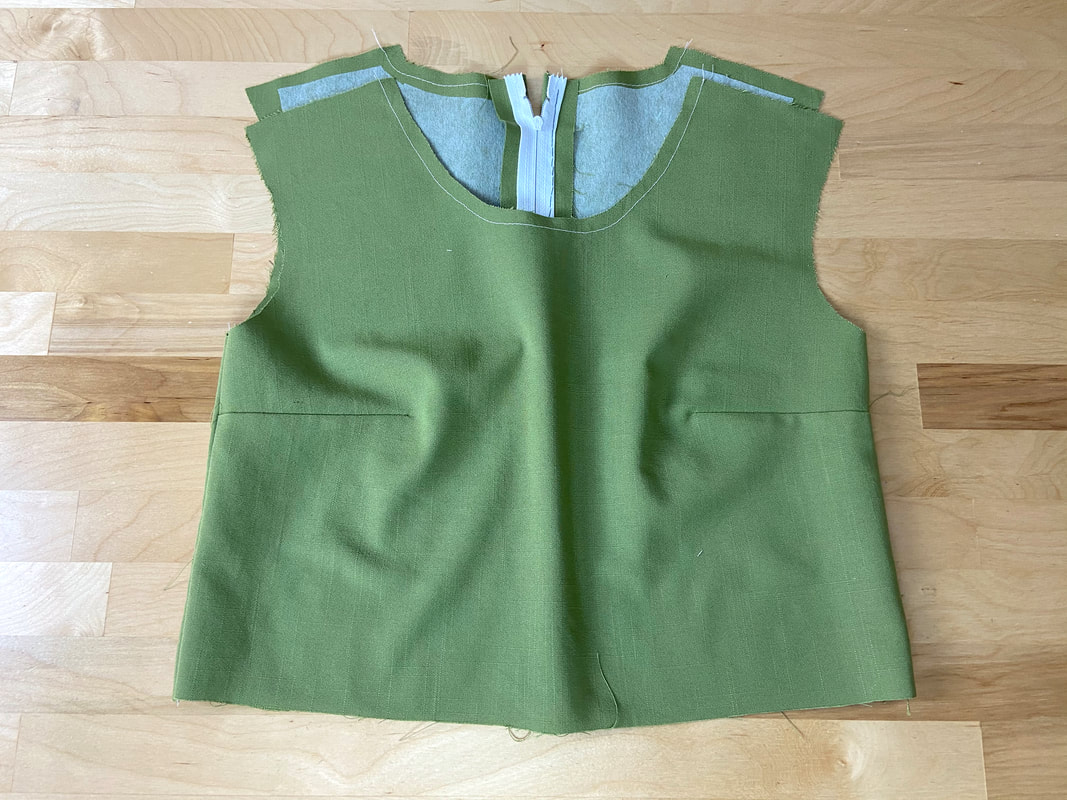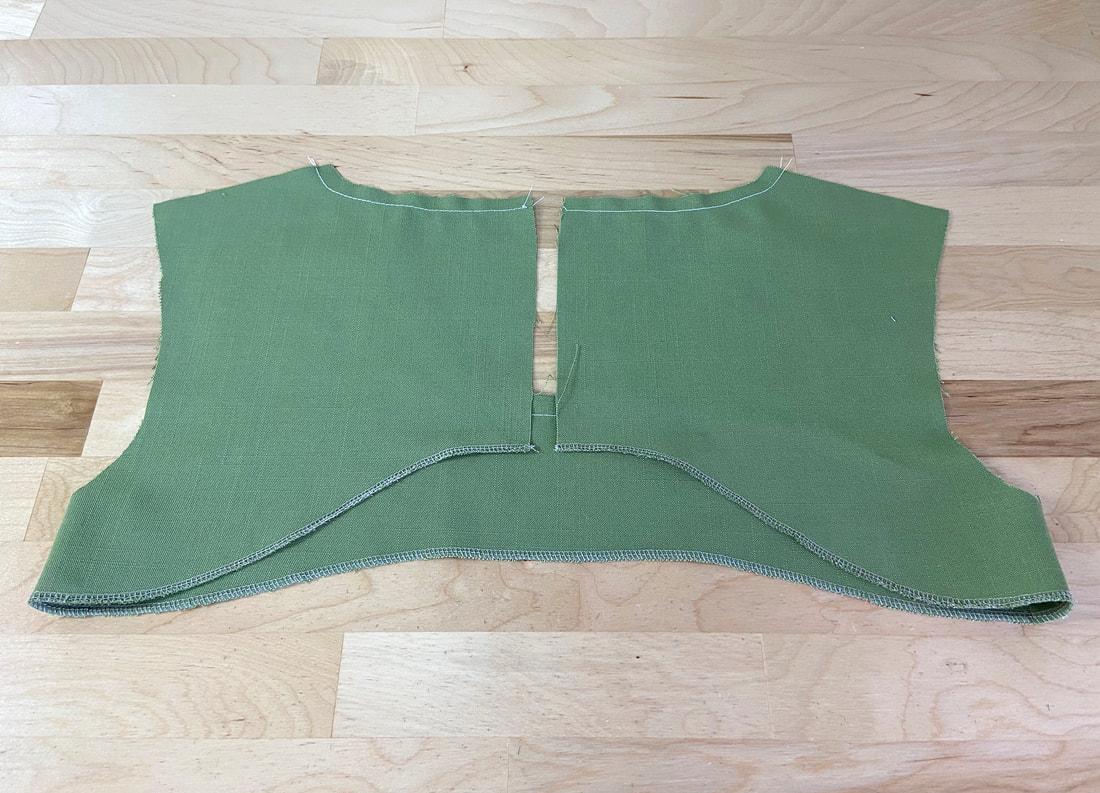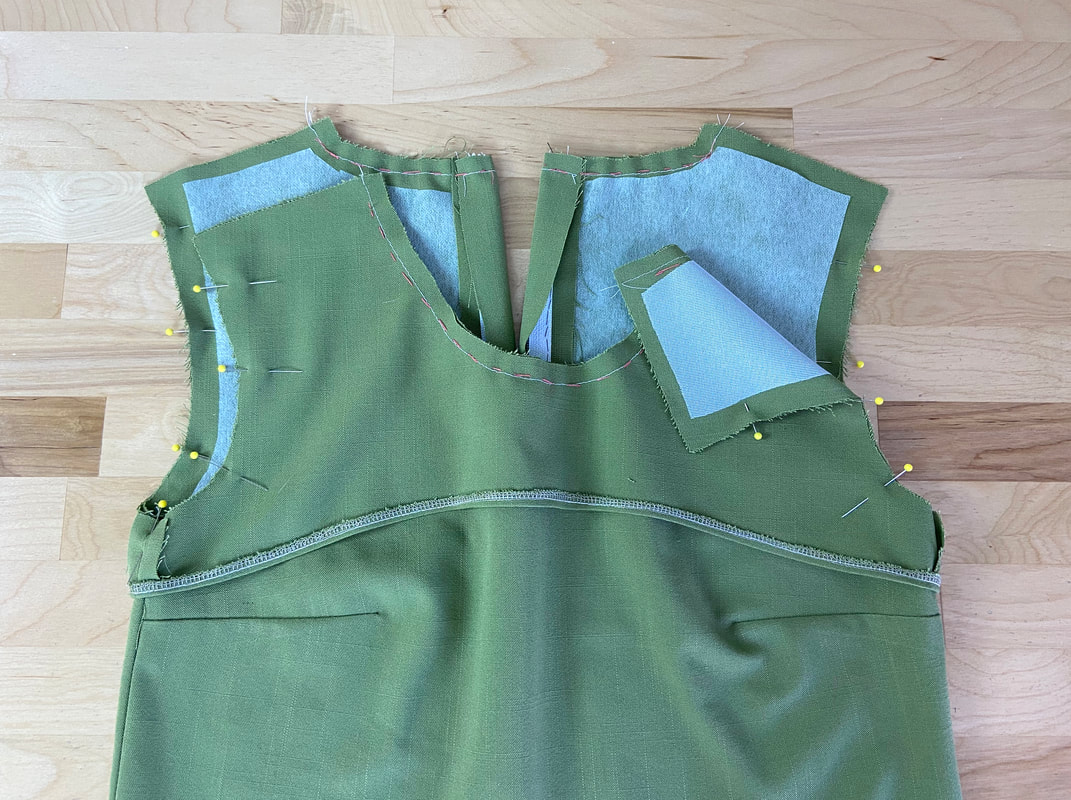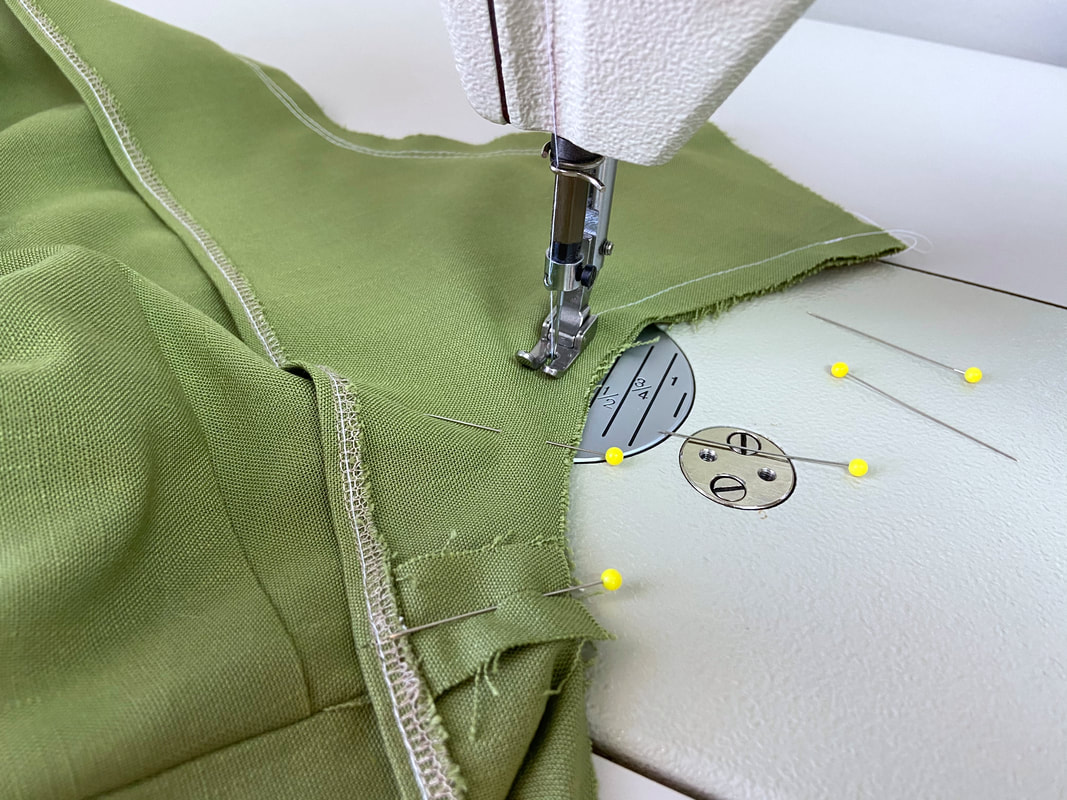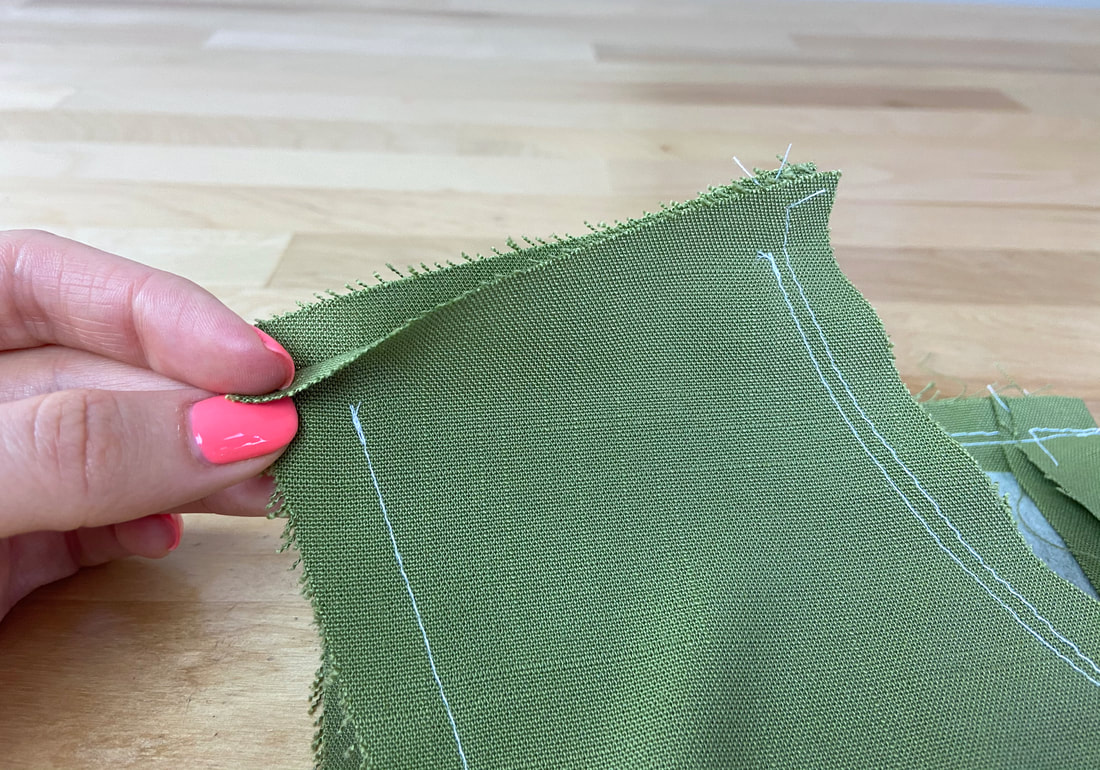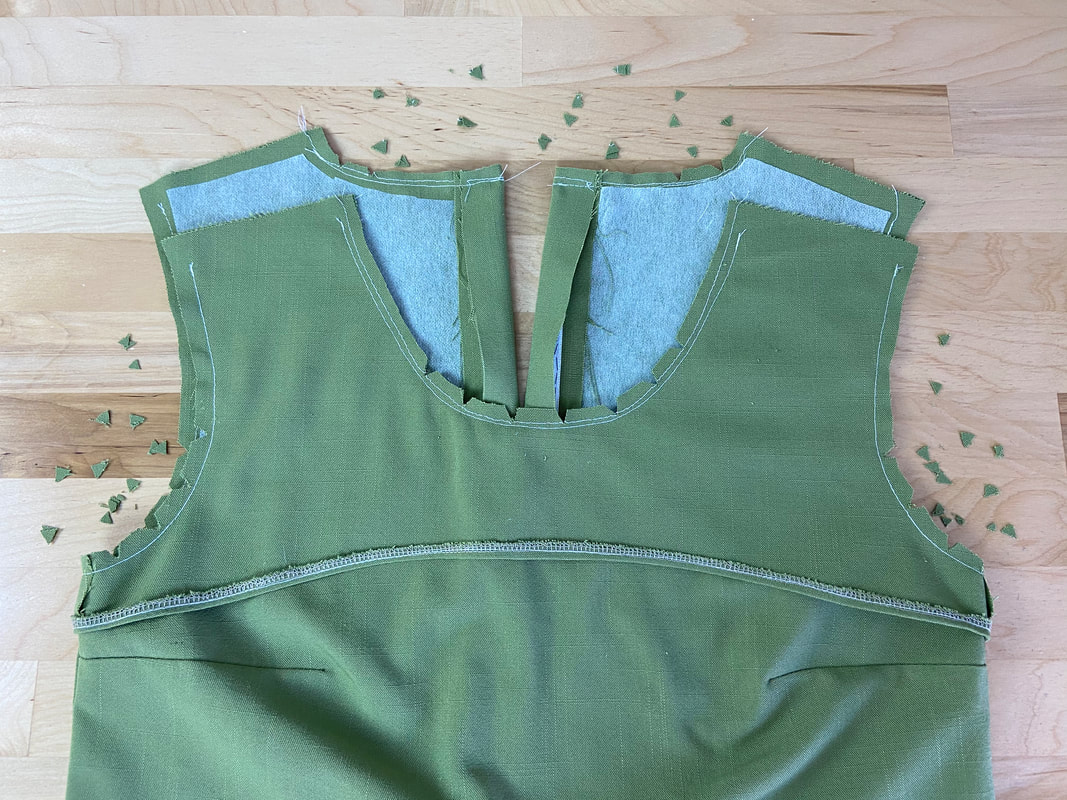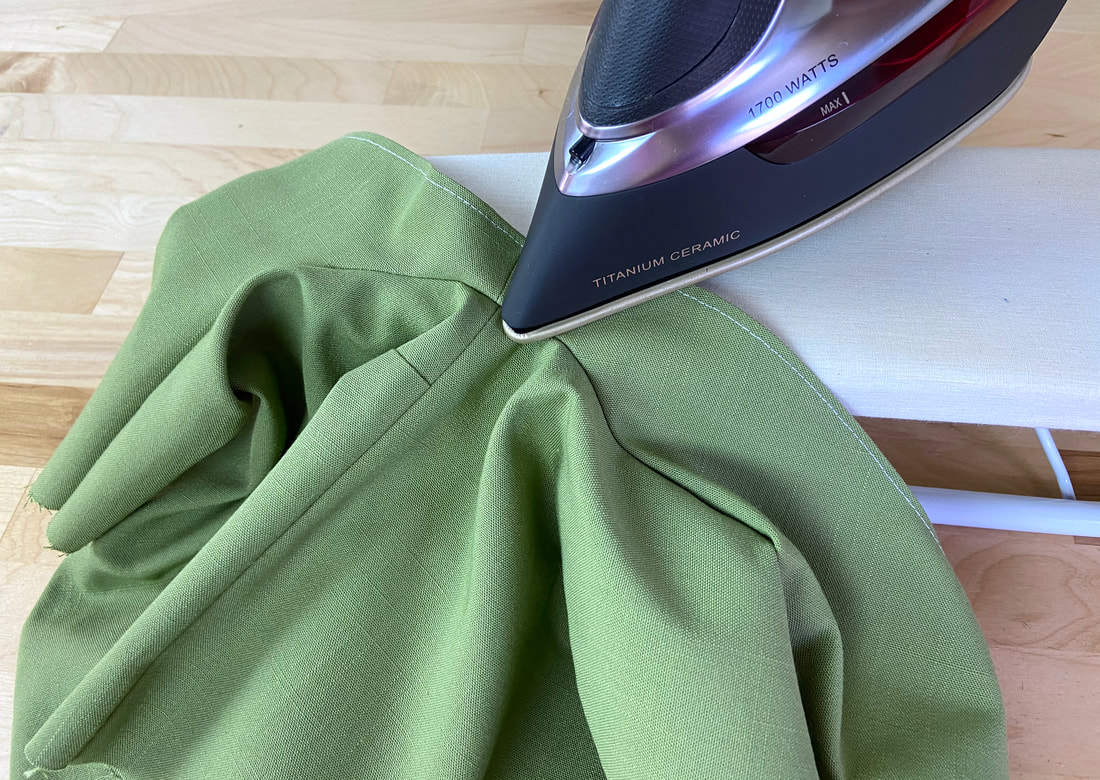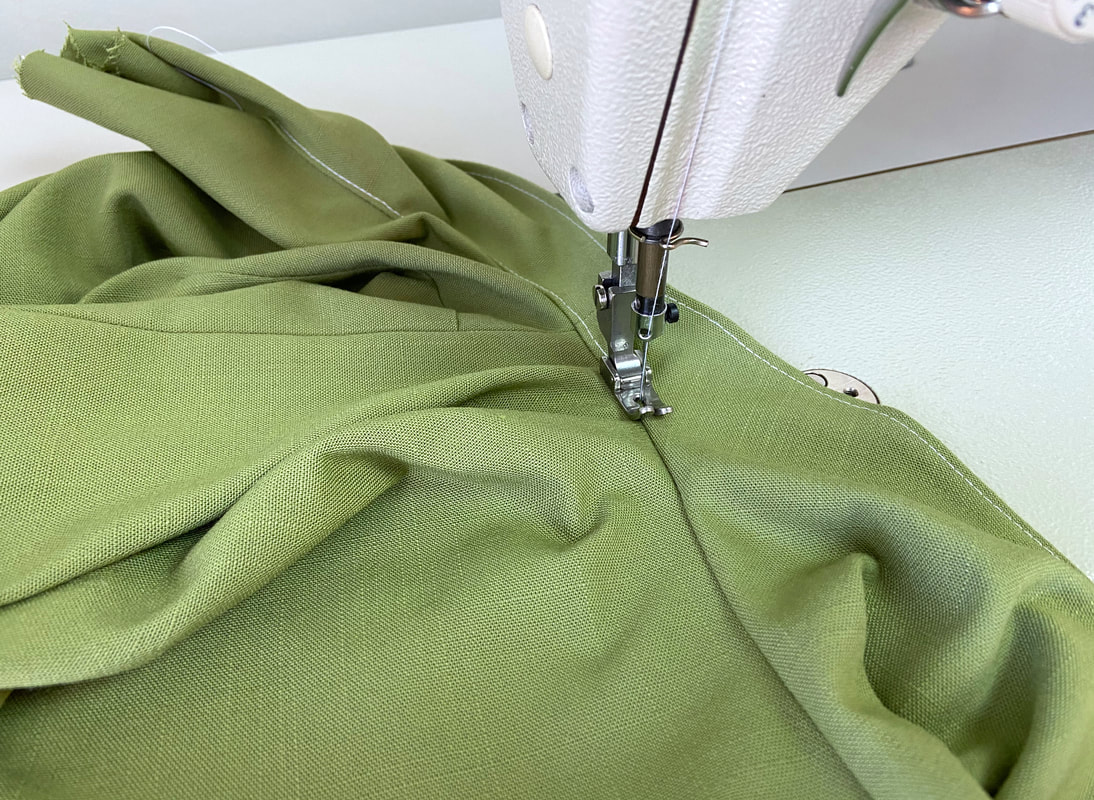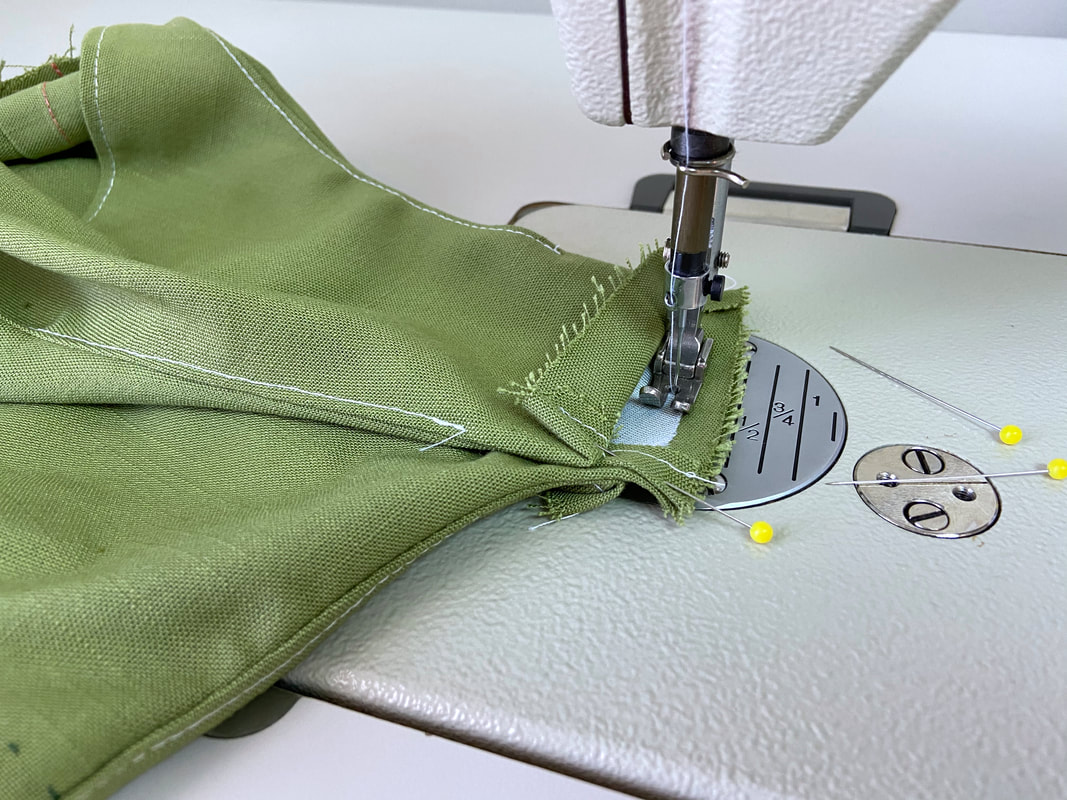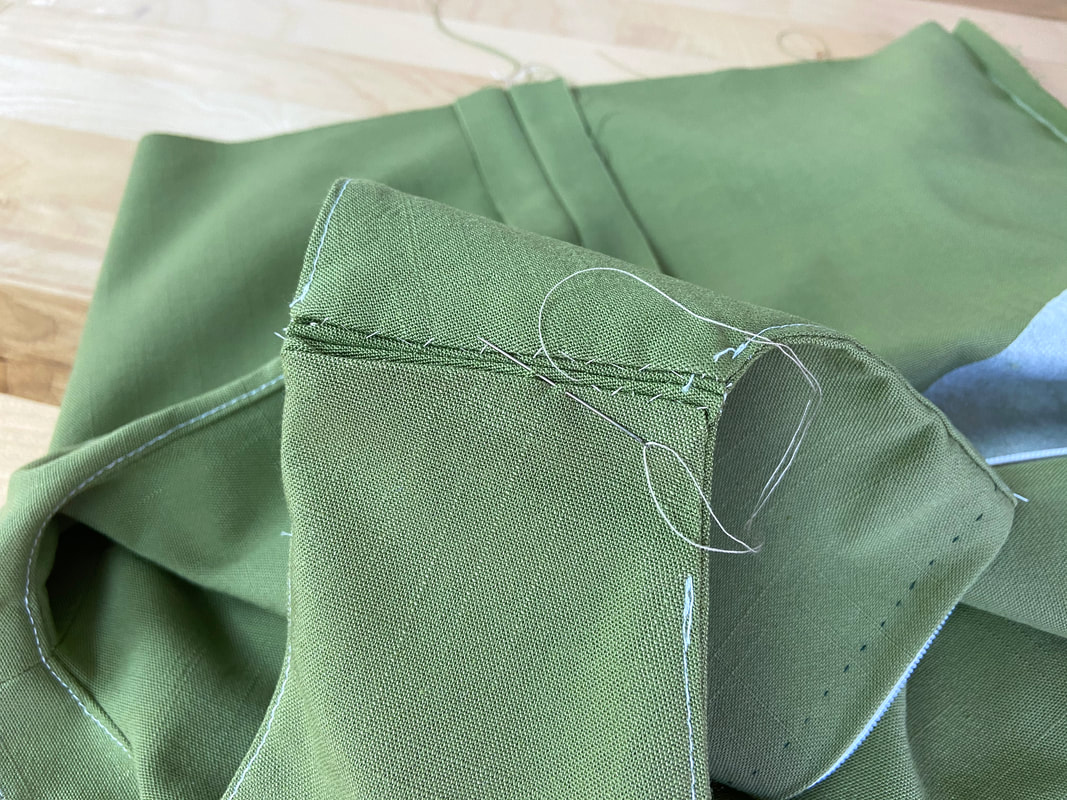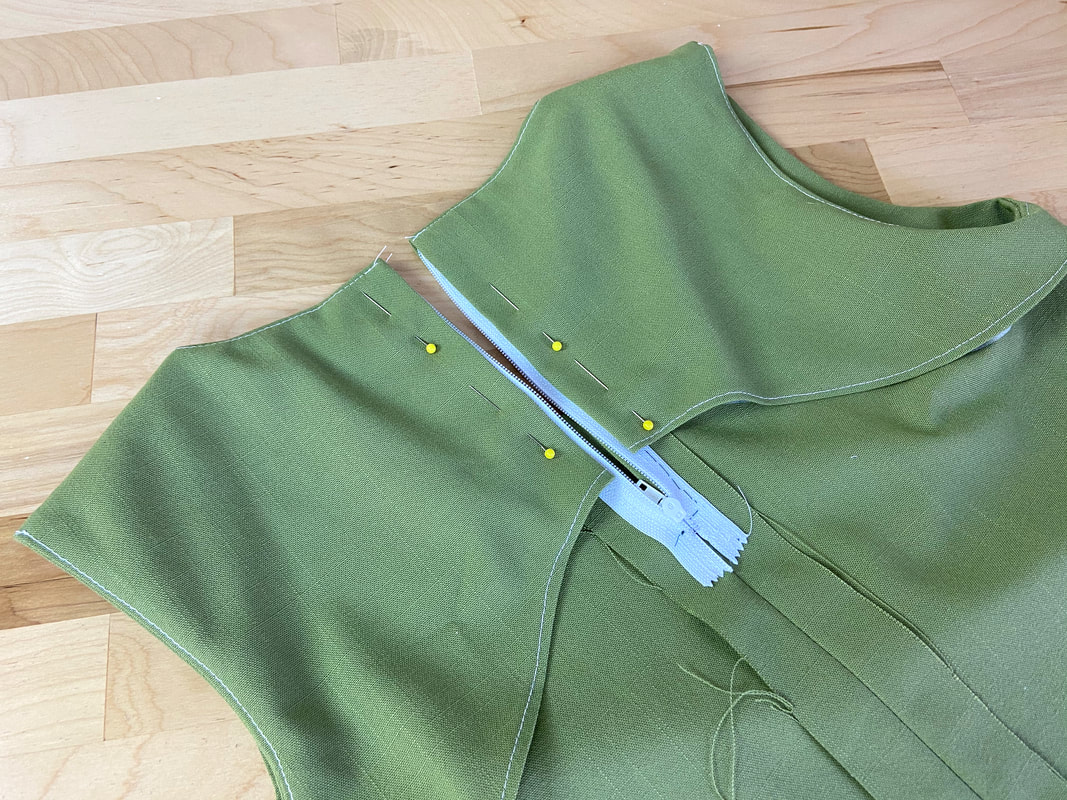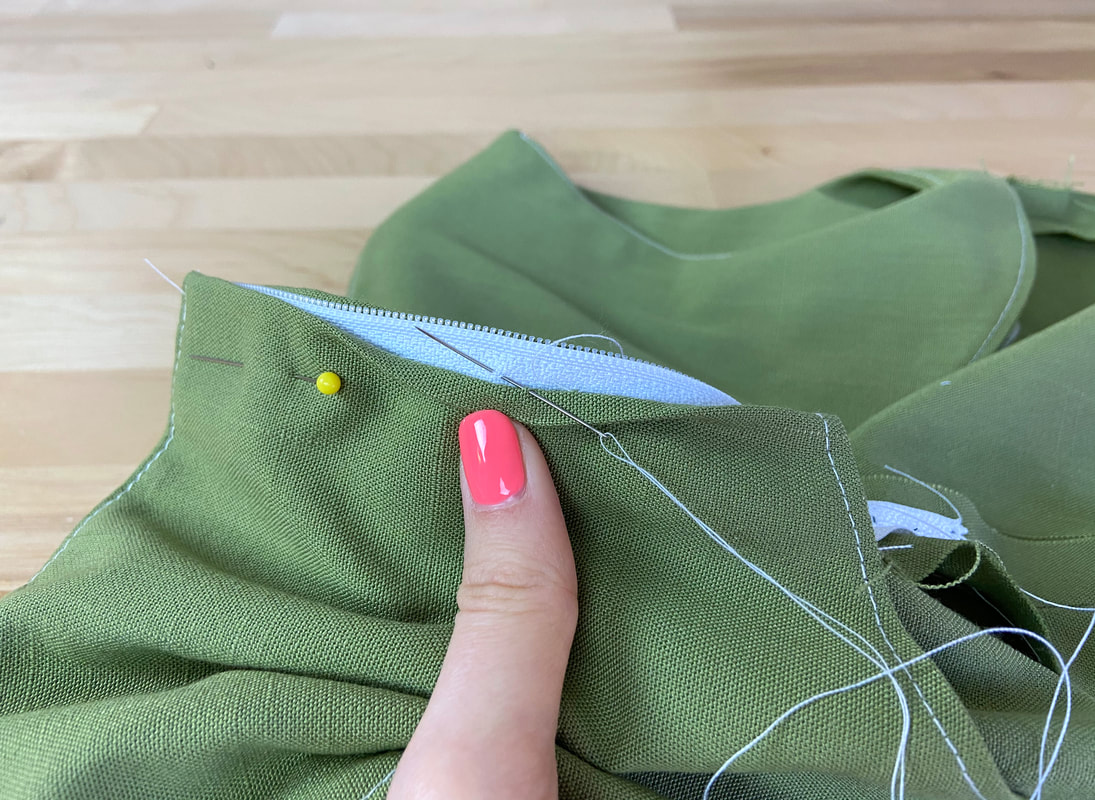Mini Tutorial: How To Sew An All-In-One Neck/Armhole Facing
1. Stitch, iron and clean-finish (if needed) both garment side seams. Leave the shoulder seam edges open as pictured above.
Interface the wrong side of the garment at the area to be covered by the all-in-one facing. You can use the facing pattern pieces to cut the corresponding interfacing layers.
Staystitch the curved edges of the neckline to stabilize and prevent them from stretching out of shape as the garment goes though its remaining construction steps. The stitch should be applied within the seam allowance and not be visible on the finished garment's right side.
Interface the wrong side of the garment at the area to be covered by the all-in-one facing. You can use the facing pattern pieces to cut the corresponding interfacing layers.
Staystitch the curved edges of the neckline to stabilize and prevent them from stretching out of shape as the garment goes though its remaining construction steps. The stitch should be applied within the seam allowance and not be visible on the finished garment's right side.
2. Stitch the facing sides seams, leaving the shoulder seam edges open. Clean-finish the bottom facing edge using the technique of your choice. In this tutorial, the edge is serged then folded and topstitched. As you did with the garment layers, staystitch the facing's curved neckline edges.
3. With the garment on its right side, place the facing compartment on top of the the garment layer with fabric face sides touching and all edges of the armholes and neckline aligning. The garment sides seams should align perfectly with those of the facing. Insert pins perpendicularly to secure the facing and garment edges together.
Note: If you don't feel quite comfortable with your sewing machine yet, it helps to replace the pins with a hand basting stitch for extra stability in the stitching process. In the image above, the curved neckline edges have been hand basted.
Note: If you don't feel quite comfortable with your sewing machine yet, it helps to replace the pins with a hand basting stitch for extra stability in the stitching process. In the image above, the curved neckline edges have been hand basted.
4. Leaving about 1/2" of unstitched space at the beginning and end of each stitch, machine stitch the neckline and armhole edges following your designated seam allowance (1/2" in this case).
All stitches should stop at about 1/2" from the shoulder seam edges - you should be able to separate the facing and garment edges as pictured above.
5. Before flipping the facing layer to the garment's wrong side, clip wedge notches into the seam allowance layers along the neckline and armhole's most curved areas.
6. Iron all facing seams with the facing and seam allowance layers pointing away from the garment as shown above. It may be easier to iron on a sleeve board so you can better reach the narrow shoulder area.
Understitch the facing along the neckline and armhole edges. Understitching entails applying a topstitch on top of the facing and seam allowance layers underneath at about 1/8" away from the seamline. This stitch keeps the faced edges flat and prevents the facing layer from rolling to the outside of the garment in the finished application.
Understitch the facing along the neckline and armhole edges. Understitching entails applying a topstitch on top of the facing and seam allowance layers underneath at about 1/8" away from the seamline. This stitch keeps the faced edges flat and prevents the facing layer from rolling to the outside of the garment in the finished application.
7. Flip the facing layer to the wrong side of the garment. Align and pin the garment (not facing) shoulder seam edges together with right sides touching. Stitch both shoulder seams at 1/2" seam allowance as shown above.
8. To complete the facing layer, fold the shoulder seam allowance inward to enclose all raw edges, and slipstitch each folded edge to the garment's seam allowance layers underneath.
9. Fold the facing's center back seam allowance inward (toward the facing's wrong side) and pin it to the zipper tape, enclosing all raw edges underneath. Last but not least, slipstitch the facing layers to the zipper tape underneath to fully seal the facing application.

